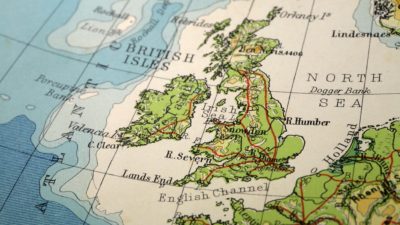The 88 Energy (LSE: 88E) share price has fallen by more than 70% from its June 2017 peak of 4.05p. Shareholders’ patience has been tested after a poor set of flow-testing results.
Management claims that the firm’s Project Icewine acreage in Alaska contains prospective resources of between 0.8bn and 2bn barrels in the HRZ shale play, with a further 1.75bn barrels from conventional reservoirs.
The problem is that exploration drilling hasn’t yet converted any of these prospective resources into commercial reserves. This year’s delayed flow test of the Icewine #2 well only recovered 1,372 barrels of fracking stimulation fluid and some gas. No oil came to the surface.
Should you invest £1,000 in Liontrust Asset Management Plc right now?
When investing expert Mark Rogers has a stock tip, it can pay to listen. After all, the flagship Motley Fool Share Advisor newsletter he has run for nearly a decade has provided thousands of paying members with top stock recommendations from the UK and US markets. And right now, Mark thinks there are 6 standout stocks that investors should consider buying. Want to see if Liontrust Asset Management Plc made the list?
The company says that these results are not “representative of the capability of the reservoir”. I think the jury’s still out.
Partner required
88 Energy now wants to drill some more wells to test the potential of the Icewine acreage. Having ended last year with a net debt of $7.2m, it’s now looking for a farm-out partner to share the cost.
A presentation published by the company on Tuesday makes it clear that plans for further drilling on Project Icewine won’t go ahead without a new partner.
It’s too soon to write off Icewine as a failure. But in my view results so far have been disappointing. This stock looks like a high-risk punt to me, so I’m looking elsewhere in the oil market.
One oiler on my radar
The Cairn Energy (LSE: CNE) share price fell by about 4% this morning after the company said it had written off $231m of the value of its Indian investments. This was necessary because shareholdings and dividend payments owed to Cairn have been confiscated by the Indian tax authorities.
This sounds like a situation to avoid. But things could soon change. The firm’s long-running tribunal claim hearing was completed in August and a ruling is promised “as expeditiously as possible”. Cairn may yet recover some, or all, of its Indian assets.
Rising production
In any case, Cairn’s financial security doesn’t depend on these assets. The firm’s stake in the Kraken and Catcher North Sea oil fields means that revenue is rising fast as these oil fields ramp up.
The group’s working interest production averaged 14,400 barrels of oil equivalent per day (boepd) during the first half of 2018. By the end of June, this figure had reached 19,700 boepd. Revenue for the half rose to $182m, up from just $10.8m during the same period last year.
Long-term opportunity
Analysts expect the firm’s full-year results to show an adjusted after-tax profit of about $75m. This figure is expected to double in 2019, thanks to rising North Sea revenues.
Alongside its North Sea production assets, Cairn also has a 40% stake in one of the largest oil discoveries of recent years. The SNE field offshore Senegal is expected to start producing in 2022. Initial output of 100,000 boepd is being targeted, with more expected after further exploration.
Cairn’s shares trade broadly in line with the group’s net asset value of around £1.5bn. The group has net cash of $75m, and earnings forecasts for 2019 put the stock on a P/E of 10. Given the long-term potential of the Senegal field, I think this could be a good entry point for long-term investors.







